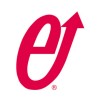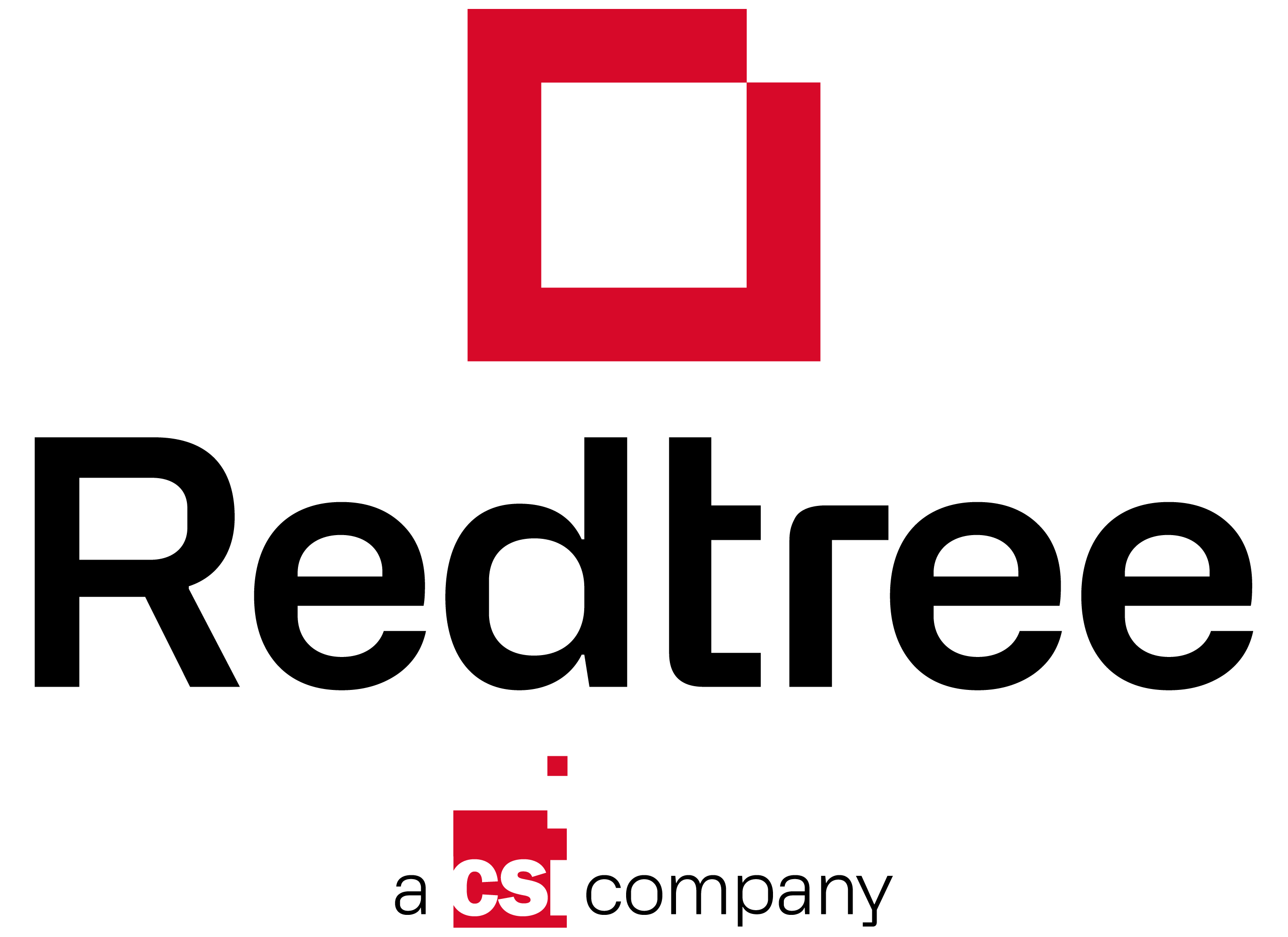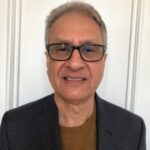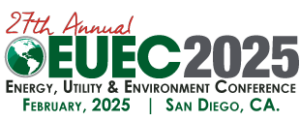Room 1 – Thursday, February 15, 2024 ( Track C+D)
POWER GEN, TENs, AI, CYBER SECURITY, SUSTAINABILITY
D1
Flexability | Cyber | Grid |AI
Feb 15 (7:30 – 9:30 am)


Flexible Operations and Efficiency & Emissions Improvement through Intelligent Dynamic Optimization and Expert Knowledge Capture
Flexible Operations and Efficiency & Emissions Improvement through Intelligent Dynamic Optimization and Expert Knowledge Capture
Jake Tuttle – Taber International, LLC
Power systems across the globe are evolving rapidly. The push toward decarbonization has introduced significant amounts of Variable Renewable Energy (VRE) generation sources onto power grids. While an important part of reducing GHG emissions, these variable and intermittent sources have changed the operating paradigm for dispatchable generators forever. Flexible operation of dispatchable units (primarily thermal generators) is key to enabling VREs to contribute power while ensuring a reliable and robust electric grid. Advanced controls are necessary to enable flexible generator operation while running efficiently and with minimized emissions. Through a evolving, hybrid control approach, utilizing advanced artificial intelligence (AI), machine learning (ML), and expert knowledge capture from experienced site and operating experts, robust control architectures have been shown to enable greater generator flexibility (e.g., greater stability at low loads, greater ramp rates), while also improving heat rate nearly 2% on average across the load range and lowering emission rates more than 25%. The hybrid control architecture is developed within an easy-to-use and intuitive platform and implemented into the DCS through biases, keeping base system operation and safety logic in place. Ultimately, these systems improve generator performance and stability – improving grid reliability – while lowering costs & emissions, and ensuring expertise is not lost as experts retire.


Operational Excellence Program
Operational Excellence Program
Operational Excellence Program – Bruce Ogden
One of the largest threats to the power generation industry is human error. Operational, controls tuning, and mechanical errors continue to lead to unplanned trips and outages. If the error is severe this can cause long term outages that can eventually create a massive loss in revenue and put the unit at risk for closure.
- Protection Phase: Ensure the long term safe and reliable operation of all units. Identifies and eliminates errors/incidents that could jeopardize the unit and the company.
- Performance Phase: Fleetwide Unit Flexibility, SOP Development, Operator Training, Improve day to day operation, Reduce costs, Improve revenue.


Artificial Intelligence Supporting Actionable Sustainable Development
Artificial Intelligence Supporting Actionable Sustainable Development
Scott Pfeiffer – Versar, Inc.
This presentation explores the potential of machine learning (ML) and artificial intelligence (AI) to accelerate sustainable development. It addresses the difficulty of addressing pressing problems associated with Climate Change in an economy that extensively uses fossil fuels. For example, the U.S. has less than 5% of the world’s population and consumes nearly 17% of the world’s energy. Approximately 21 million barrels of oil are consumed in the United States for petrochemical manufacturing, pharmaceuticals, plastics, and transportation, including work vehicles that run on it. Our modern economy is built on cheap, abundant energy. How do we begin to unravel this dependency and meet sustainable development goals? How do we collect, distill, and analyze the data to make sense of the impact? How can AI and ML effectively tackle mitigation and adaptation from the global impact of industrialization? How can the Federal Agencies benefit from these technologies? By leveraging ML and AI, we can better understand and address challenges related to sustainable development and the damage caused by flooding, fires, droughts, and extreme heat. If we understand these, we can begin to address better ways to generate and use energy and understand efficient buildings and transportation. We can even predict and address disaster response, electric demand load management, distributed energy systems, optimal clean energy placement, sea-level and coastal resilience, traffic optimization for electric vehicles, water resources, and efficient farm and food production. This presentation delves into the importance of balancing mitigation and adaptation strategies. It highlights the role of stakeholders and governments in maximizing the policy needed to harness the potential of these tools that can help make sense of the complex data behind climate science.The presentation will discuss how AI will impact our work, communities, science, and economies to understand the near future needs contractors can be expected to address and hopefully remediate the long-term damage of climate change.


The Use of AI Technology for Mapping Utilities at Scale
The Use of AI Technology for Mapping Utilities at Scale
The Use of AI Technology for Mapping Utilities at Scale
Joe Eberly- 4M Analytics
The future of utility location is evolving quickly and with Artificial Intelligence (AI) deployed alongside traditional Subsurface Utility Engineering (SUE), One Call Locating processes, it is changing the landscape of early risk mitigation. This session is an exploration of how the emergence of Artificial Intelligence (AI) to collect, interpret and synthesize the vast amount of silohed utility data available in the public and private domain is enhancing traditional efforts and transforming the Utility Damage Prevention and Utility Engineering markets.


Optimizing Grid Performance, Security and Cyber Resilience through use of Heterogeneous Photonic Integrated Circuit Technology
Optimizing Grid Performance, Security and Cyber Resilience through use of Heterogeneous Photonic Integrated Circuit Technology
Alex Dely – Raytheon Missiles & Defense
The 2022 CHIPS and Science Act has greatly accelerated the expansion of US wafer fab capacity for the manufacturing of very high performance Heterogeneous Photonic Integrated Circuit (HIP) technology microelectronic components and systems with unique mission/life critical national security applications to the 16 DHS designated Critical Infrastructure Sectors, including the Electric Utility Sector. We will present a range of innovative HPIC applications throughout the power system network, including: standard and renewable generating plant, substation energy storage, grid modeling/simulation/optimization using Artificial Intelligence/Machine Learning, and optimized solar cell and battery systems.
D2
Power Gen | Mercury | AI |
Feb 15 (10 am – 12 pm)


Enabling Sustainability and Regulatory Compliance: Data Management and Digital Solutions
Enabling Sustainability and Regulatory Compliance: The Crucial Role of Data Management and Digital Solutions in the Current Business Landscape
Ramesh Narasimhan – ERM
In an era marked by increased scrutiny of corporate practices and a growing emphasis on environmental sustainability, the significance of a mature data management framework, well-defined processes, and resilient digital solutions cannot be overstated. This presentation underscores the pivotal role that these components play in meeting regulatory obligations and satisfying stakeholder demands for transparency and accountability, particularly in the context of evolving disclosure requirements such as those set forth by the SEC and European CSRD/Taxonomy. Furthermore, supported by integrated digital solutions and well-defined outcomes, companies can not only meet their present obligations but also lay a foundation for effective decarbonization programs, where data-driven insights guide strategic decision-making, risk assessment, and the formulation of impactful emission reduction strategies. This evolution is critical for companies to differentiate their sustainability performance among peers and gain competitive advantage.


Transforming Utilities with AI: A Roadmap to Enhanced Efficiency and Cost Reductions
Investment strategies for Env. mkts under current state of new regs
Transforming Utilities with AI: A Roadmap to Enhanced Efficiency and Cost Reductions
Phil Zeringue – VP Strategic Partnerships and Growth, Nuclearn
IntroductionEvery job where a computer is the primary tool for performing work will be impacted by AI. Within the next 24 months not being willing or capable of using AI in your job will be equivalent to not being able to use a computer or smartphone in the workplace today.· According to a McKinsey report, AI-driven automation can lead to a 20-30% increase in operational efficiency in various industries, including utilities.· PwC estimates that by 2030, AI could contribute up to $15.7 trillion in cost reductions· IBM reports that implementing AI for predictive maintenance in utilities can reduce equipment maintenance costs by up to 25%.· Gartner predicts that by 2025, customer service interactions automated by AI will increase by 400%.· A study by Accenture notes that AI applications in utilities can help optimize energy consumption patterns, potentially reducing energy consumption by 10-20· In a recent Forbes article AI-powered fraud detection systems have shown an accuracy rate of over 90%, contributing to significant cost savings· According to a report by Capgemini, AI can help optimize supply chain operations, reducing supply chain costs by 20% and improving production efficiency by 50%. Workforce Productivity:· Salesforce suggests that companies using AI for automation experience a 41% reduction in time spent on manual data entry tasks· Harvard Business Review states that AI adoption is becoming a key differentiator for companies, with early adopters experiencing a 5% higher market share and 35% higher shareholder value.Understanding the Current State of UtilitiesA. Overview of traditional utility operations1. Manual processes and human decision-making2. Challenges faced by utilities in terms of efficiency and cost-effectivenessMultiple Use Cases and Benefits of AI in UtilitiesA. Definition and brief explanation of AI in the utility contextB. Use cases of AI in utilities1. Problem identification and dispatch automation2. Customer care and engagement automation3. Billing, finance, fraud and theft detection automation4. AI powered engineering assistant5. Project and schedule risk analysis6. Predictive maintenance advancements7. Parts and equipment inventory optimizationAchieving Cost Savings with Market Ready ToolsA. Reduced Operational Costs1. Streamlining workflows with AI2. Minimizing human error in decision-makingB. Case Studies and Examples1. Highlight specific utilities that have successfully implemented AI2. Showcase the cost savings achieved through automated decision-makingThe Future Landscape of Utilities A. Emerging Technologies1. Integration of AI with other emerging technologies (e.g., IoT)2. Anticipating further advancements in utility operationsB. The Role of Regulations1. Current regulatory landscape for AI in utilities2. The need for adaptive and supportive regulationsVIII. ConclusionA. Summarize key points1. Recap the benefits of AI in utilities2. Emphasize the potential for sustained cost savingsB. Closing thoughts1. Inspire optimism for the future of utilities with AI2. Encourage continued exploration and innovation in the fieldQ&A SessionA. Invite questions from the audienceB. Provide thoughtful responses, reinforcing key points from the speech


Power Generation, Natural Gas, Diesel Fuel, Power Storage
D1.5 POWER GENERATION, NATURAL GAS, DIESEL FUEL, POWER STORAGE
Daniel Barbersek – Waukesha Pearce Industries
The purpose of this presentation is to provide the audience with the knowledge of what effect that fuel selection has with engine performance, generator operation, system reliability and total cost of ownership.
The audience will all have a better understanding of why the natural gas generator market is growing at its current rate, and why natural gas generators are replacing diesel generators in their radiational markets. The audience will also learn the impact of fuel selection has on the maintenance and overall reliability of the generator system. they will also get an better understanding of rich burn Vs lean burn engines.


Haze and Mercury Reduction From Coal Fired Power Plants
Haze and mercury reduction from coal fired power plants
Mads Kirk Larsen – FLSmidth Airtech
Haze is due to fine particles and condensable when burning coal. The fine particles are difficult to remove by traditional means. By replacing some of the high voltage units in the electrostatic precipitators with Coromax system, it has been demonstrated that more than 70% of PM2.5 particles can be removed. The Coromax micro-pulse system provides an ultra high voltage – more than the double of conventional voltage and this enables the capture of the fine particles. For mercury, the highly intensive generation of electrons near the discharge electrodes will dissociate, excite, and ionize the gas molecules and produce vast amounts of radicals which then will oxidize the gaseous elementary mercury, which then can be washed out in the scrubber. Coromax will simultaneously reduce the overall power consumption significantly.


Full-scale Demonstration of Multi-process Sensor at a Cycling PC-fired Boiler
B2.4 Full-scale Demonstration of Multi-process Sensor at a Cycling PC-fired Boiler
Hong-Shig Shim – Reaction Engineering International
A multi-process sensor that is capable of monitoring real-time boiler conditions has been developed and demonstrated in pulverized coal-fired units. The sensor can provide information on corrosion, deposition, surface temperature, and heat flux which can be utilized for advanced control and plant performance optimization. The real-time sensor is increasingly relevant as coal power plants shift from predominantly base-load operations to predominantly transient operations involving large load swings. The system has been under continuous operation for over 10,000 hours and the results will be discussed focusing on the issues related to cycling impacts.
D3
TENs | Thermal Energy Networks
Feb 15 (1 – 3 pm)


Thermal Energy Networks: The Next Utility
Thermal Energy Networks: The next utility
Thermal Energy Networks: The Next Utility – WayerFurnace –
Will Lange
Interconnecting buildings with renewable Thermal Energy Networks (TENs)is the next step forward in a decarbonized and electrified future. Distributing ground temperature water provides homes and businesses with low cost, ultra high efficiency heating, cooling, and hot water. With efficiencies typically over 400%, water loop heat pumps eliminate the need for fossil fuel combustion and reduce energy consumption dramatically. While extreme weather events test the limits of delivered fuel systems and conventional HVAC, TENs deliver efficiency and comfort in any conditions with a low peak, grid friendly load.


Utility & Policy – Eversource Energy
Eversource Energy - Utility & Policy
Eversource Energy – Utility & Policy
Eric Bosworth
Eric is a Manager in the Clean Technologies business unit of Eversource Gas. He is responsible for the implementation of clean gas projects within the Eversource portfolio to achieve Eversource’s goal of carbon neutrality by 2030. These include Geothermal, Hydrogen, and Renewable Natural Gas opportunities.
As part of his role, Eric oversees the planning, design, and construction of the networked geothermal pilot. He is responsible for managing the day to day progress as well as overall timeline and budget. He will also oversee the operation of the system once it has been completed.
Prior to this role, Eric worked in the Gas Engineering department with Eversource. Before joining Eversource, Eric worked in the upstream oil and gas industry as an international field engineer with Schlumberger.
Eric holds a Bachelor of Science degree in Chemical Engineering from Carnegie Mellon University in Pittsburgh, Pennsylvania.


Brightcore Energy TENs Engineering & Design
Brightcore Energy - TENs Engineering & Design
Brightcore Energy TENs Engineering & Design – Jonathan Hernandez


Advocacy & Leadership -HEET-(Home Energy EfficiencyTeam)
Brightcore Energy - TENs Engineering & Design
HEET (Home Energy EfficiencyTeam) – Audrey Schulman
C
PowerGen | Steam | Turbines | Sustainability
Feb 15th (3:30 – 5 pm)


Optimization of a Steam Turbine for Mechanical Drive Applications
Optimization of a Steam Turbine for Mechanical Drive Applications
Adam Neil – Elliot Group – Manager, Turbine & Expander Development
This presentation discusses optimization of a steam turbine for mechanical drive applications


On-site Generation – Sustainability and Infrastructure
Using on-site generation projects to drive sustainability and Infrastructure Improvement
Mark Aldrich, Pete Kelly – Head of Engineering – Red Tree Engineering
The presentation will focus on industry experience and current economic modeling for three typical onsite power generation options at industrial facilities: (1) new combined heat and power, (2) energy storage options, and (3) back-up gensets. The advantages of each option will be explored in the context of facility resiliency and GHG reduction.
Project best practices for integrating the project into host facilities and practical considerations for successful project completion will be covered, along with applications of innovative design, procurement, and construction package sequencing to maximize schedule efficiency and reduce project risk.


Steam Turbine Upgrade Options with Respect to Heat Rate Improvement
Steam Turbine Upgrade Options with Respect to Heat Rate Improvement
Muhammad Riaz – Mitsubishi Power Americas
Heat rate is commonly used to gage the health of a power plant and is a direct measure of its performance. The design of the steam turbine and how it interacts with the rest of the plant plays a large part in the overall heat rate. Every year the power industry puts huge financial resources towards heat rate improvements; understanding the effect of these improvements ensure that investments are made in the optimal areas. This paper will identify the expected impact on plant heat rate of upgrading specific components of a steam turbine and will provide an in-depth review of the relative benefits of each. The expected heat rate improvement provided by upgrading and modifying aspects of the steam turbine such as blades, seals, extraction pressure set points, and others will be ranked to provide a list of options to consider when looking to improve heat rate.


STEAM HP Bypass Valves and the effects on your system when cycling.
D1.1 STEAM HP Bypass Valves and the effects on your system when cycling.
Daniel Freebern – Advanced Valve Solution
Limits of HP bypass valvesPower stations that were originally designed for base load applications are now increasingly being asked to operate on a two shift, stop/start regime; this is more commonly known in the industry as cycling. The multiple start/stops that these stations are now experiencing cause an increase of operational issues due to the constantly changing process parameters. One of these issues is the design of HP bypass valves. Designed for base load operation, HP bypass often meet their physical limits. In this presentation we would like to show what these limits are, what effect they have on the valve and piping. Second part is to show what we can do to prevent these negative effects on plant reliability.

Exploring Step Up Transformer Challenges to Accommodate PV and Storage
Exploring Step Up Transformer Challenges to Accommodate PV and Storage
Jaisen Mody – Power Energy Consultant – JSJS Consulting
TBD

